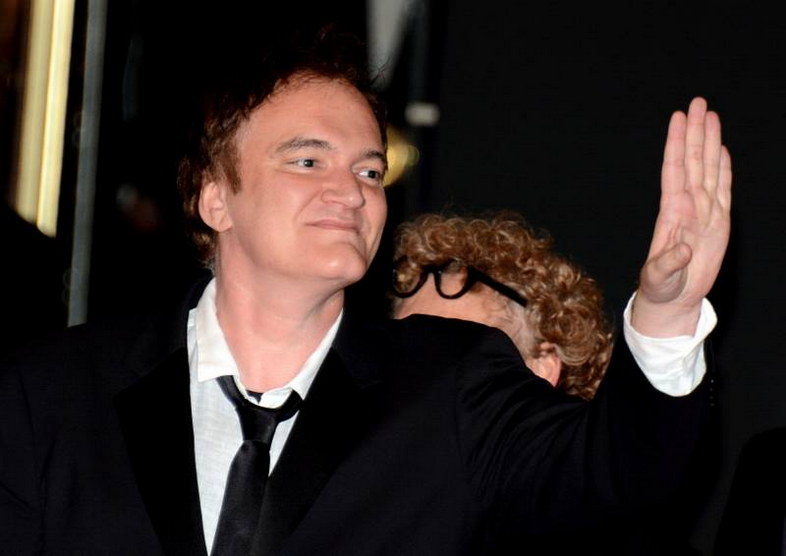Quentin Tarantino, a master of cult cinema, has earned his reputation as one of the most influential and groundbreaking directors of our time. Known for his eclectic taste and distinctive storytelling, Tarantino’s films are a tapestry of unforgettable scenes, richly drawn characters, and cinematic flair. This article dissects the common features that set Tarantino’s movies apart. Exploring the unique elements that have cemented his status as a true auteur.
1 – Non-Linear Storytelling
A hallmark of Tarantino’s filmmaking style is his penchant for non-linear storytelling. Rather than following a traditional narrative structure, he often weaves together multiple storylines and timeframes, keeping audiences engaged and on their toes. From “Pulp Fiction” to “The Hateful Eight,” this innovative approach has become a defining characteristic of his oeuvre.
2 – Unforgettable Dialogue
Tarantino’s movies are renowned for their sharp, witty, and often provocative dialogue. His writing captures the essence of each character, infusing their conversations with humor, tension, and depth. Scenes like the opening of “Inglourious Basterds” and the diner conversation in “Reservoir Dogs” showcase his ability to create memorable exchanges that resonate with viewers long after the credits roll.
3 – Homage to Classic Cinema
An avid cinephile, Tarantino frequently pays tribute to classic films and genres that have inspired him. Quentin Tarantino movies are a melting pot of influences, from spaghetti westerns and blaxploitation films to martial arts flicks and film noir. “Kill Bill,” for example, blends elements of samurai cinema, kung fu, and spaghetti westerns, while “Once Upon a Time in Hollywood” serves as a love letter to the golden age of Tinseltown.
4 – Strong Female Characters
Tarantino’s films are often celebrated for their strong, complex female characters. From Uma Thurman’s portrayal of the Bride in “Kill Bill” to Pam Grier’s Jackie Brown, these women are fierce, independent, and more than capable of holding their own. Tarantino doesn’t shy away from placing women front and center in his narratives, crafting unforgettable roles that defy stereotypes and challenge expectations.

5 – Pop Culture References
Tarantino’s encyclopedic knowledge of pop culture is woven into the fabric of his movies. Characters often engage in spirited discussions about music, television, and film, demonstrating Tarantino’s affinity for blending high and low culture. This penchant for pop culture references, such as the Madonna debate in “Reservoir Dogs”. Or the iconic “Royale with Cheese” conversation in “Pulp Fiction,” adds a layer of relatability and authenticity to his storytelling.
6 – Stylized Violence
No analysis of Tarantino’s films would be complete without mentioning his signature use of stylized violence. Combining brutality with dark humor, Tarantino crafts intense, visceral sequences that simultaneously shock and captivate. While some critics argue that his films glorify violence, Tarantino maintains that his approach is purely artistic. His fans continue to revel in the adrenaline-fueled intensity of his action-packed scenes.
7 – Iconic Soundtracks
Tarantino is as much a curator of music as he is a filmmaker. His soundtracks are eclectic, ranging from obscure soul and rock tracks to haunting Morricone scores. With an uncanny ability to select the perfect song for each scene, Tarantino’s music choices become an integral part of the movie experience, enhancing the mood and atmosphere. Tracks like “Stuck in the Middle with You” in “Reservoir Dogs” and “Misirlou” in “Pulp Fiction” have become synonymous with their respective films, highlighting the power of a perfectly curated soundtrack.
8 – Ensemble Casts
Tarantino has a knack for assembling stellar ensemble casts, often collaborating with the same actors across multiple films. From Samuel L. Jackson and Uma Thurman to Tim Roth and Michael Madsen, his films feature a rotating roster of talented performers who bring his eclectic characters to life. This consistency in casting has contributed to the distinct atmosphere and camaraderie that permeates his body of work.
9 – Striking Visuals
A master of visual storytelling, Tarantino crafts scenes that are as unforgettable as they are visually arresting. His use of bold color palettes, inventive camera angles, and dramatic lighting lends his movies a distinct visual identity. Films like “Django Unchained” and “Inglourious Basterds” are particularly noteworthy for their striking cinematography. These movies serves to heighten the impact of each scene.
10 – Dark Humor
Tarantino’s films are infused with a unique brand of dark humor that blends wit, irony, and satire. This comedic undertone, often juxtaposed with moments of intense violence or drama, creates a distinctive tone that has become a trademark of his storytelling. From the absurdity of the “Gimp” scene in “Pulp Fiction” to the satirical slant of “Inglourious Basterds,” Tarantino’s dark humor keeps audiences enthralled and entertained.
In conclusion, Quentin Tarantino has carved out a unique place for himself in the world of cinema, and his films continue to captivate and influence audiences and filmmakers alike. By examining the common features of his movies, such as nonlinear storytelling, memorable dialogue, homages to classic cinema, and a distinctive visual style, we can better appreciate the unique talent and vision of this celebrated filmmaker. So, whether you’re a die-hard Tarantino fan or just discovering his work, there’s no denying the impact and legacy of this groundbreaking director.
FAQs:
Q: What are some of Quentin Tarantino’s most well-known films?
A: Some of Tarantino’s most iconic films include “Pulp Fiction,” “Reservoir Dogs,” “Kill Bill,” “Django Unchained,” and “Inglourious Basterds.”
Q: Which actors frequently collaborate with Quentin Tarantino?
A: Samuel L. Jackson, Uma Thurman, Tim Roth, Michael Madsen, and Harvey Keitel. These are among the actors who have appeared in multiple Tarantino films.
Q: What are some examples of Tarantino’s use of nonlinear storytelling?
A: Some examples of nonlinear storytelling in Tarantino’s films include the jumbled timeline in “Pulp Fiction”. The interweaving stories in “Reservoir Dogs,” and the chapter-based structure in “Inglourious Basterds.”
Q: How has Quentin Tarantino influenced other filmmakers?
A: Tarantino’s distinctive style, characterized by its blending of genres, snappy dialogue, and visual flair, has inspired many contemporary filmmakers to experiment with similar techniques and narrative structures.
Q: What is Quentin Tarantino’s directorial debut?
A: Quentin Tarantino’s directorial debut is “Reservoir Dogs,” released in 1992. The film gained significant attention and helped to establish his reputation as a unique and influential filmmaker.
Q: Which genres does Quentin Tarantino typically draw inspiration from?
A: Tarantino is known for drawing inspiration from a wide range of genres. Including film noir, spaghetti westerns, samurai films, exploitation cinema, and crime dramas. This blending of genres has become a hallmark of his filmmaking style.

